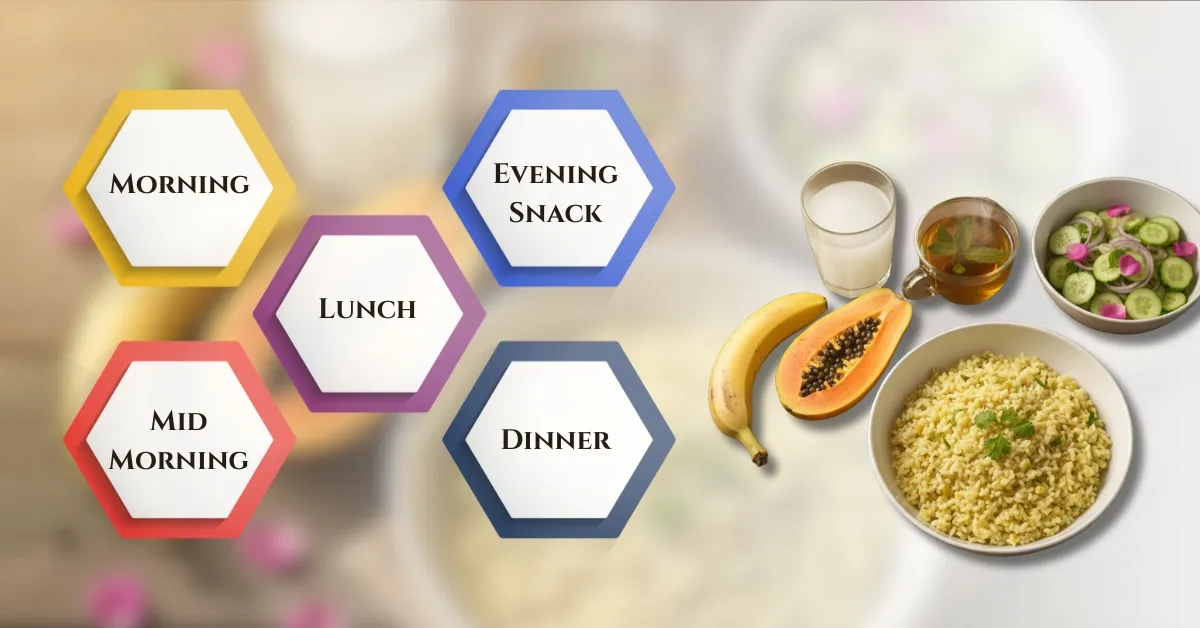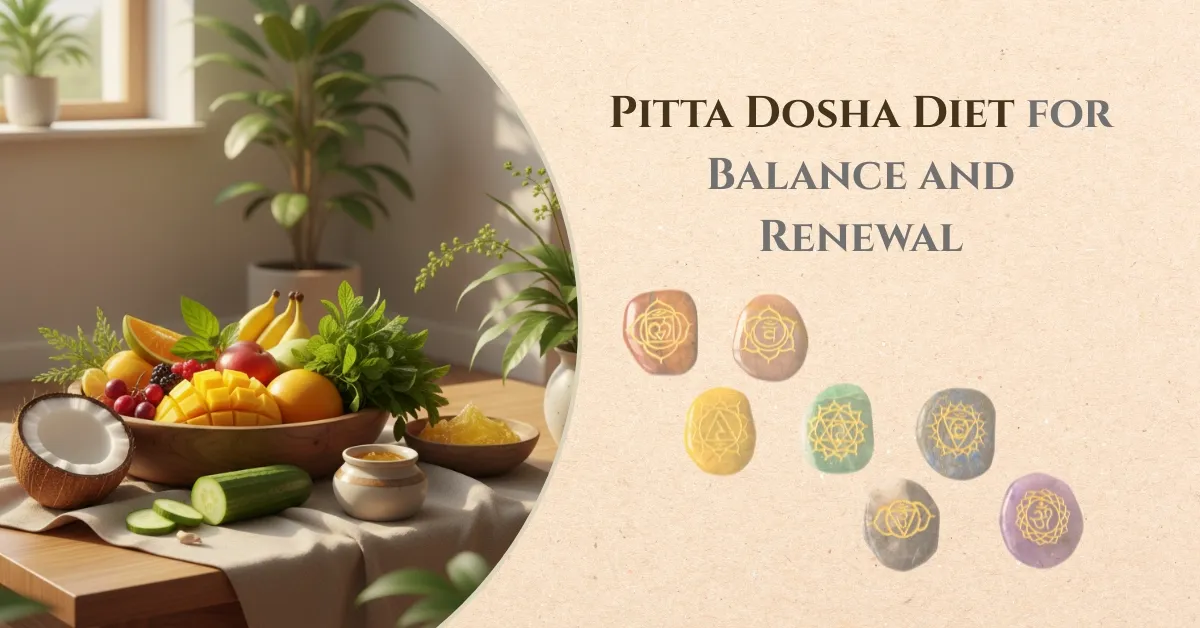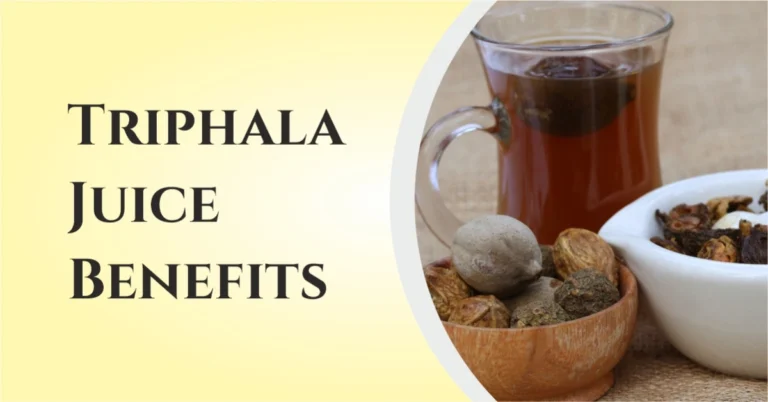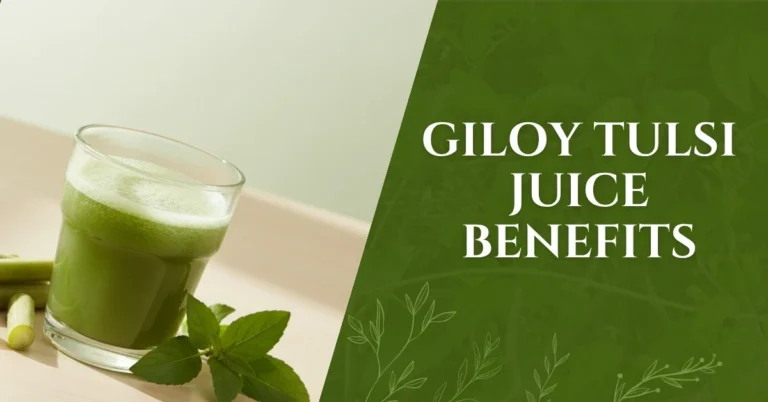Pitta Dosha Diet That Restores Balance, Energy & Inner Calm
In Ayurveda, Pitta Dosha represents the element of fire mixed with water—the force behind digestion, metabolism, and body temperature. It governs transformation in both body and mind, giving you sharp focus, strong appetite, and glowing skin when balanced. But when it goes out of balance, that same inner fire turns into excess heat, leading to acidity, irritability, and inflammation.
Many modern habits—like eating spicy food, skipping meals, sleeping late, or working under stress—add more fuel to this fire. These patterns disturb the natural diet of Pitta Dosha, creating problems such as heartburn, restlessness, and hormonal imbalances.
This guide offers a complete Ayurvedic approach to restore calm and cooling energy through the right pitta dosha diet—one that keeps the inner flame steady instead of letting it burn out of control. You’ll learn how to use food, lifestyle, and daily routines to balance digestion, energy, and emotions naturally.
Learn more about Pitta Dosha causes and symptoms.
Core Principles of the Pitta Dosha Diet
A Pitta Dosha Diet works on a simple Ayurvedic idea — cool down the body’s internal fire while keeping digestion strong and steady. Since Pitta is ruled by fire and water, it easily overheats when you eat spicy, oily, or heavy food. The key is to choose meals that are cooling, hydrating, and light, allowing the body to stay calm and balanced even in warm weather or stressful times.
Ayurveda teaches that sweet, bitter, and astringent tastes are best for balancing Pitta Dosha. These tastes cool the system, reduce acidity, and bring emotional stability. Foods like coconut, cucumber, melon, rice, and leafy greens support digestion without increasing heat.
On the other hand, spicy, sour, salty, and fermented items—such as chili, vinegar, pickles, fried snacks, and coffee—can irritate the stomach and fuel anger or frustration. By following a balancing Pitta Dosha Diet, you help your body restore its natural temperature, keeping energy high and emotions steady throughout the day.
Pitta Dosha Diet Chart

A Pitta Dosha Diet Chart focuses on eating at the right time, in the right amount, and with the right kind of food to maintain internal coolness and steady energy. The goal is to support digestion without adding excess heat. Each meal should be light, moist, and calming, while hydration remains a key part of your daily rhythm.
Morning (6:00–8:00 AM)
Start your day with a glass of lukewarm water or coconut water to flush out toxins and cool your system. Breakfast can include sweet fruits like papaya or ripe banana with a few soaked almonds. If you prefer something filling, try rice flakes (poha) cooked with a touch of ghee and mild herbs.
Mid-Morning (10:00–11:00 AM)
Sip on coconut water, buttermilk, or herbal tea made with licorice or rose petals. Hydration at this time keeps Pitta’s fire gentle and balanced.
Lunch (12:00–1:00 PM)
This is the main meal of the day, when digestive strength is highest. Eat freshly cooked moong dal khichdi, steamed rice, or bottle-gourd curry with ghee. Add cucumber salad or mint chutney for extra cooling effect. Avoid spicy curries or fried food.
Evening Snack (4:00–5:00 PM)
Choose something light like fresh fruit, rose sherbet, or a small bowl of boiled vegetables with a drizzle of ghee. Drink cool water or herbal tea instead of coffee or tea.
Dinner (7:00–8:00 PM)
Keep dinner simple and light. Try rice porridge (kanji), moong dal soup, or vegetable stew with a few drops of ghee. This prevents acidity or disturbed sleep. Always finish eating at least 2 hours before bed.
Hydration & Portion Tips
- Drink water throughout the day, but avoid gulping large amounts during meals.
- Never skip meals or eat too late at night.
- Keep portion sizes moderate—enough to satisfy, not to feel heavy.
Following this healthy diet chart for Pitta Dosha helps keep your digestion steady, your skin clear, and your mind calm. Consistency is more important than perfection, so aim to maintain meal timing even on busy days.
Recommended Foods for Pitta Dosha
The best diet for Pitta Dosha is one that cools the fire element without weakening digestion. Pitta thrives on moderation—meals that are soothing, hydrating, and gentle on the stomach. To balance this dosha, Ayurveda recommends natural, plant-based, and mildly seasoned foods that help maintain internal calm and steady energy.
Cooling Foods That Balance Pitta
Choose foods that are naturally sweet, bitter, and astringent in taste. These help reduce acidity and heat in the body while keeping the mind relaxed.
- Grains: Rice, wheat, oats, barley
- Vegetables: Cucumber, bottle gourd, pumpkin, broccoli, leafy greens
- Fruits: Mango, papaya, sweet apple, pomegranate, grapes, melon, coconut
- Dairy: Cow’s milk (lukewarm), ghee, unsalted butter, fresh curd (daytime only)
- Proteins: Moong dal, tofu, soft paneer, soaked almonds
- Drinks: Coconut water, rose water, fennel tea, buttermilk, aloe vera juice
These foods are considered part of the pitta dosha diet list because they are light, cooling, and non-acidic. Adding ghee or coconut oil to your meals keeps digestion smooth and nourishes the body without overheating it.
Foods to Avoid (That Aggravate Pitta)
Certain foods tend to trigger excess heat and acidity, making Pitta symptoms worse. Avoid the following:
- Spices: Chili, garlic, mustard, onion, pepper, vinegar
- Fried & Oily Foods: Deep-fried snacks, junk food, spicy pickles
- Sour & Salty Items: Lemon, tamarind, fermented foods, papad, chips
- Beverages: Coffee, alcohol, carbonated drinks, black tea
- Meat & Eggs: Especially red meat and seafood, as they increase internal heat
By focusing on freshness, sweetness, and lightness, this pitta dosha diet (India) approach supports better digestion, clearer skin, and a calm, focused mind. Small lifestyle habits—like eating on time and staying hydrated—enhance the cooling effects of these foods naturally.
Pitta Dosha Diet Plan for Weight Loss

Losing weight with a Pitta Dosha Diet is not about strict fasting or skipping meals—it’s about keeping your internal fire steady and satisfied. When you starve or delay food, Pitta rises sharply, leading to acidity, anger, and sudden hunger spikes. Instead, eat small, frequent meals that are light, cooling, and easy to digest.
Start your day with a glass of lukewarm water with a few drops of lemon to wake up digestion gently. Breakfast should be simple and soothing—like cooked oats with ghee, or fresh fruit such as melon or papaya. Avoid heavy or fried options that burden the stomach early in the morning.
At lunch, eat your main meal: steamed rice, moong dal, and boiled vegetables with a teaspoon of ghee. Add cucumber raita or coconut chutney for cooling balance. Portion control matters—eat until satisfied, not full.
In the evening, a light bowl of vegetable soup or khichdi works best. Always finish dinner before 8 p.m. to avoid sluggish digestion.
Throughout the day, sip on herbal teas like fennel, coriander, or rose to boost metabolism while cooling the system. These teas gently support fat metabolism without heating the body.
This diet plan for Pitta Dosha in India helps balance digestion, manage appetite, and promote sustainable weight loss—keeping you calm, clear, and energetic instead of tired or irritated.
Recipes for Pitta Dosha Diet
When it comes to cooking for Pitta balance, the goal is simple—make meals that are light, mildly spiced, and naturally cooling. Ayurveda suggests avoiding strong flavors like chili, vinegar, and mustard, and instead using soothing ingredients such as ghee, coconut, coriander, and fennel. Here are a few easy pitta dosha diet recipes that calm the body while supporting healthy digestion.
Moong Dal Khichdi
A classic Ayurvedic comfort meal that cools and nourishes.
- Cook ½ cup yellow moong dal and ½ cup rice with 3–4 cups of water.
- Add a teaspoon of ghee, cumin seeds, turmeric, and a pinch of salt.
- Garnish with fresh coriander and serve warm with cucumber raita.
Bottle-Gourd Curry (Lauki Sabzi)
This mild curry reduces heat and is easy to digest.
- Sauté grated bottle gourd in ghee with cumin and a little turmeric.
- Add coconut milk and cook until soft.
- Season with coriander leaves and a squeeze of sweet lime (not lemon).
Sweet Lassi
A refreshing drink to balance Pitta after lunch.
- Blend one cup of fresh curd with water, add a spoon of sugar, and a pinch of cardamom.
- Drink at room temperature; avoid cold lassi directly from the fridge.
Rose Sherbet
The perfect Ayurvedic summer cooler.
- Mix rose syrup or crushed petals with water and a dash of rock sugar.
- Add a few basil or mint leaves for a calming aroma.
These easy Pitta Dosha vegan diet recipes bring both comfort and clarity. Each dish supports cooling digestion, steady energy, and a peaceful mood without overwhelming the senses. Even small tweaks—like replacing chili with coriander or using ghee instead of oil—can make a big difference in balancing Pitta naturally.
How to Follow a Pitta Dosha Diet in Summer and Winter
Summer:
During hot months, follow a light and cooling routine. Drink rose water, coconut water, or fennel tea to stay hydrated. Eat fresh fruits like melon, grapes, and cucumber salads. Avoid spicy, fried, or sour foods, as they increase body heat and irritation.
Winter:
In cold weather, add mild warmth without overheating. Use a little ghee, turmeric, and gentle spices like coriander or cardamom. Eat warm soups, rice, and moong dal dishes. Skip chili, garlic, or oily snacks that disturb digestion.
With these simple changes, your Pitta Dosha Diet in winter and summer stays balanced, keeping your energy and digestion stable in every season.
Lifestyle and Diet of Pitta Dosha
Balancing Pitta goes beyond food—it’s about how you live each day. A calm routine, mindful breathing, and enough rest help maintain inner peace and strong digestion. Ayurveda recommends a steady lifestyle that cools the body and relaxes the mind.
Start mornings early, around sunrise, and practice gentle yoga or pranayama like Sheetali and Anulom Vilom to release heat and calm emotions. Avoid pushing yourself too hard at work or during exercise, as overexertion quickly ignites Pitta.
Have your meals at regular times, and finish dinner early—at least two hours before sleep. This helps the lifestyle and diet of Pitta Dosha stay balanced and supports proper digestion overnight. Meditation or a short evening walk before bed also helps clear the day’s stress.
Keep your surroundings peaceful—soft lighting, cool colors, and soothing fragrances like sandalwood or rose work best. By keeping both Pitta Dosha diet and lifestyle gentle and rhythmic, you allow your body’s natural harmony to return.
Explore proven methods to balance Pitta Dosha naturally.
Detox and Cleansing for Pitta Dosha
A proper Pitta Dosha detox diet is all about cooling and calming the system—never about extreme fasting. It removes heat, clears toxins, and resets digestion while keeping your energy stable.
Simple Detox Practices
- Start your morning gently: Drink lukewarm water with 1 tsp ghee to lubricate and soothe the digestive tract.
- Eat light and hydrating meals: Include moong dal soup, rice porridge, or stewed apples for easy digestion.
- Avoid spicy, fried, or sour foods—they increase internal heat.
- Sip herbal coolers: Try fennel, coriander, or rose petal tea throughout the day.
- Take Triphala at night: ½ teaspoon with warm water cleanses the intestines without irritation.
- Stay hydrated: Coconut water or aloe vera juice helps maintain cooling balance.
Why This Detox Works
This gentle routine restores your natural metabolism and emotional calm. When followed for a few days, it lightens the body, improves skin clarity, and keeps your inner fire steady.
Following a balanced pitta dosha diet after detox ensures the cooling effect stays long-term, bringing you a clear mind, smooth digestion, and renewed vitality.
Final Thoughts
Ayurveda reminds us that real healing comes from awareness—how we eat, rest, and respond to life. The Pitta Dosha Diet is not just about food; it’s a way of living that helps cool the body, calm the mind, and bring lasting balance.
By choosing cooling foods, maintaining regular routines, and allowing time for rest, you honor your body’s natural rhythm. Every small, mindful choice—like eating on time, staying hydrated, or avoiding overwork—helps keep your inner fire steady.
Begin today with one gentle change toward a Pitta-friendly lifestyle, and let balance, clarity, and peace follow naturally.
FAQs
Q1: What is the ideal breakfast for Pitta Dosha?
Ans: A calm and cooling start is best — choose sweet fruits like papaya, melon, or apple with soaked almonds, or have rice flakes cooked in milk and ghee. Avoid heavy or spicy breakfasts that trigger heat.
Q2: Can Pitta people eat spicy food?
Ans: Not regularly. Spicy food increases internal heat and acidity. It’s better to use mild spices such as coriander, fennel, and turmeric to flavor meals gently.
Q3: Which fruits are best for Pitta?
Ans: Opt for cooling, juicy fruits like grapes, pomegranate, melon, papaya, and ripe mango. Avoid sour ones such as pineapple or citrus fruits.
Q4: How often should I detox?
Ans: A short Pitta Dosha detox every few months helps clear toxins and calm digestion. Keep it light and nourishing—no extreme fasting or skipping meals.
Q5: Is a vegan diet suitable for Pitta Dosha?
Ans: Yes, but ensure it’s hydrating and cooling. Include coconut milk, ghee alternatives, tofu, and moong dal for nourishment. The goal is balance, not restriction.







